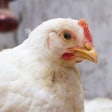
What will be the future for poultry meat consumption in the post-COVID-19 world? The question was examined by Dasha Shor, Mintel global food analyst speaking at the Consumer Trends and Buying Patterns, hosted by the International Poultry Council.
The COVID-19 pandemic has accelerated many changes in consumer buying habits that had already begun to emerge, she noted, for example an interest in alternative meats, but it has also awakened new interests more directly related to the pandemic. Poultry meat would appear to be better placed than other meats to respond to these changes, but producers must align themselves more closely to these growing consumer preferences if they are not to lose ground.
Producers also need to be aware that the global recession will also change what consumers are looking for on supermarket shelves or from delivery services.
Poultry and alternative meats
Rising prices and health concerns could feed into growing demand for alternative proteins.
Globally, there has been a 13% increase in demand for alternative proteins over the last 3 years. While Europe remains the largest market, launch activity has been particularly strong in North America, which has accounted more than half of growth over the last year. Interest is also growing strongly in Asia.
Shor noted that alternative protein companies are not looking to cater to vegetarians, but rather are interested in capturing the much bigger flexitarian market, hence attempts to imitate the appearance and texture of meat. While, to date, efforts in this sector have focused on burgers and sausages, moves into chicken have already been made and these can be expected to increase. Alternative chicken nuggets and kelp-based turkey are already being marketed.
The current consumer interest in health and the connection between the severity of COVID-19 disease and diet has resulted in renewed consumer interest in health, and this is benefitting plant-based alternatives to meat.
Half of U.S. consumers, for example, believe that plant-based protein is healthier than animal protein, while 40% of processed meat consumers in the U.K. believe that they ought to cut back on their consumption.
Consumers may be more concerned about their health, yet very few people think that vegan diets are particularly appealing. Where alternative meats are concerned, their complexity and degree of processing are seen as particularly concerning and this is where chicken – being a single ingredient – can win.
However, in addition to competing directly with alternative proteins, there are other ways that animal protein producers can gain from the interest in plant-based alternatives. In addition to entering the segment directly, companies can also meet consumers halfway, for example through blended products. In all cases, however, to ensure long-term survival all companies must be completely transparent.
Red meat has already been associated with a number of health issues. Chicken may be viewed as healthier, but given that COVID-19 is a zoonoses, all animal protein producers must now go the extra mile to reassure consumers of the safety of their products.
In China and India, for example, plant-based products are increasingly seen as safer than animal products. In India, for example, jackfruit has recently emerged as an alternative to chicken following misplaced rumors about a connection between chicken and COVID-19.
Diminished spending power
Safety, however, is not the only element that has accelerated changing consumer demands. The recession is likely to result in consumers buying smaller amounts of meat and making less frequent purchases, and this may accelerate the trend toward eating “less but better”.
This trend has been developing for some time with consumers concerned about animal welfare and environmental credentials. However, COVID-19 has added new elements to this interest. The novel coronavirus has seen communities come together to help each other, and consumers will increasingly look for locally produced produce. Local may not necessarily equate to next door, it may simply mean produced within a consumer’s home country, but consumers will increasingly be looking to ensure that companies are treating not only animals but also their communities well. Consumers will be looking for sustainability in its broadest sense.
Value is also likely to increase in importance. This is highly subjective, and producers will have to identify what it means for each market. For some, it may mean higher quality, while for others it may mean greater convenience.
View our continuing coverage of the coronavirus/COVID-19 pandemic.
















